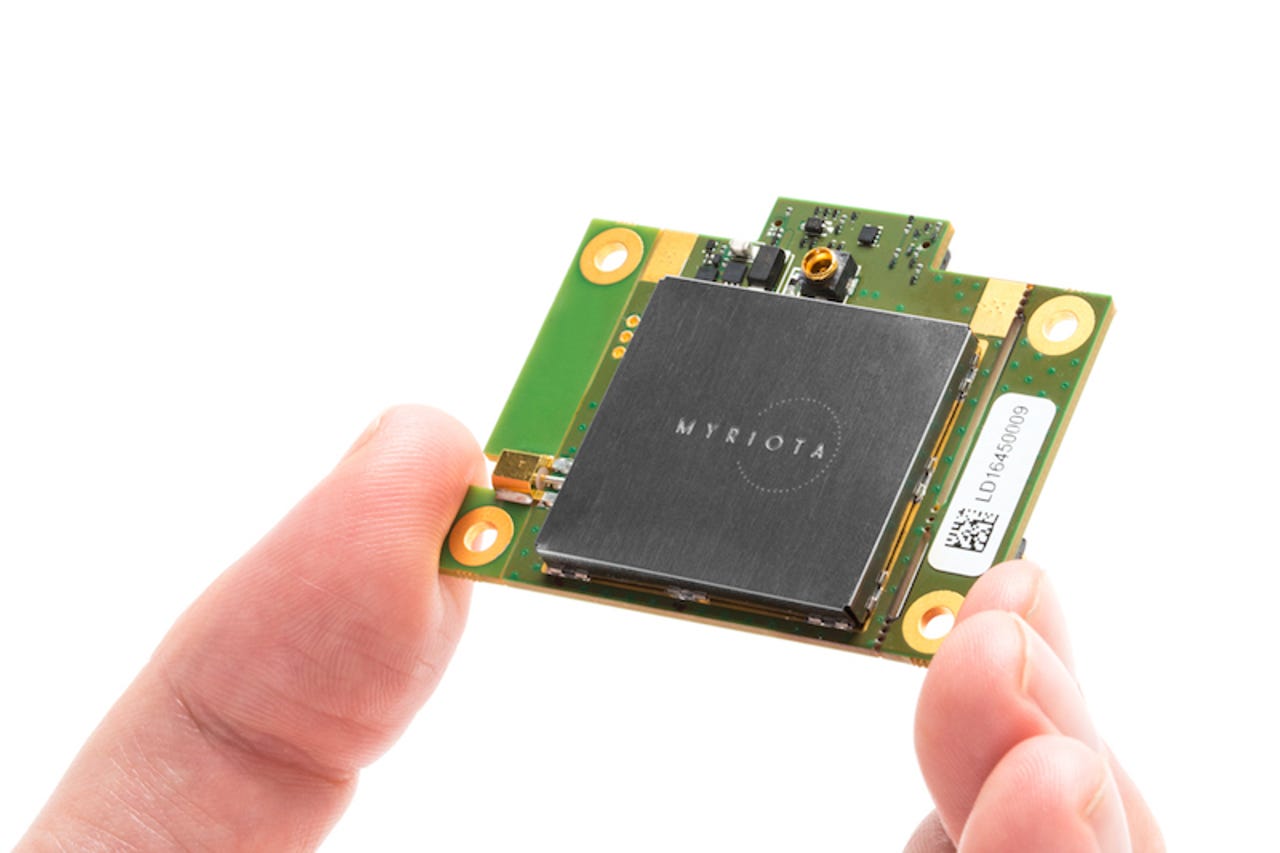Myriota brings satellite IoT to regional Australia


Internet of Things (IoT) technology startup Myriota claims to have solved the satellite connectivity challenges of access, scale, battery life, and cost to provide links for devices in regional areas of Australia.
Based in South Australia, Myriota spent seven years on research and development for a transmitter product, holding 17 patents on the technology.
It plans to launch its commercial "direct-to-orbit connectivity solution" for IoT in 2018.
Speaking during the Australian Communications and Media Authority (ACMA) RadComms 2017 conference in Sydney, Myriota CEO Alex Grant said his company is already trialling its solution across livestock and water monitoring in agriculture, as well as asset tracking, marine science, defence, vessel tracking, and utilities in areas outside of cellular coverage, such as in Arthur River and Armidale.
Myriota is also eyeing a future in commercial fishing monitoring, Grant said, with governments moving to mandate tracking to ensure compliance with licensing and sustainable fishing practices.
At present, there is no affordable way to track the millions of fishing vessels in maritime areas, he said, with Myriota's solution possibly providing the answer to this.
Myriota's current-generation technology allows for a four-year battery life of IoT devices using two AA batteries; scales to hundreds of millions of connections; and offers a tenfold cost reduction from traditional satellite offerings to "reduce the bar for getting into space", the chief executive said.
It also currently has GPS on board, but Grant said the company is now working on equipping geolocation without needing this. The advantage, he said, would be the removal of a power-hungry chip from IoT devices, further improving cost and battery life.
Grant also explained how Myriota has worked to ensure the security of its system.
"We had to really work very hard to solve a problem not just of data payload encryption -- that's fairly straightforward -- the real challenge is the authentication and privacy aspects of the link so that you can't, for example, have an attacker getting home metadata attacks on your IoT system," Grant said.
"For example, counting how many things you have or being able to tell where all your things are. Even if they don't know what the actual sensory [data is], there's a lot of commercial information in perhaps the population of your deployment."
Calling its solution the "holy grail for remote IoT" in a blog post, Myriota said its low-cost transmitters, which send small packets of data to low earth orbit nano-satellites, remove the requirement for infrastructure and backhaul on the ground.
Nano-satellites are being launched in increasing numbers, with ASX-listed Sky and Space Global (SAS) one such company looking to build a wholesale narrowband low-cost voice and data network through the provision of satellite services.
It will sell nano-satellite connectivity to telco providers throughout equatorial Asia, South America, Central America, and Africa, as well as to shipping companies and airliners operating in those areas.
SAS completed in-orbit testing of its first three nano-satellites in August, and is aiming to have 200 nano-satellites in orbit by 2020, purchasing four dedicated missions from Virgin Galactic to launch these mini satellites into space on its vehicle LauncherOne.
Previous RadComms Coverage
Cellular not the answer to IoT: NNNCo
Cellular networks are not necessary for IoT, NNNCo has argued, saying its LoRaWAN network is capable of providing the coverage needed across both metro and regional areas.
Save a little 5G spectrum for sats: SES Satellites
With 3.6GHz and mmWave spectrum earmarked for mobile telcos to deploy 5G networks over the next three years, SES Satellites has argued that they should not be simply shifted off the bands.
ACCC pushes holistic spectrum ownership ahead of 5G
The ACCC is pushing a change in stance on spectrum holdings in replacement of the current auction and allocation process of individual bands to the highest bidders.